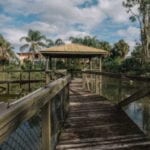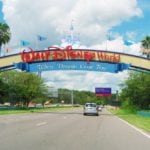 Mysteries
Mysteries  Mysteries
Mysteries  History
History 10 Surprising Stories About the Texas Rangers
 Humans
Humans 10 Philosophers Who Were Driven Mad by Their Own Theories
 Miscellaneous
Miscellaneous 10 Video-Game-Worthy Weapons and Armors from History
 Weird Stuff
Weird Stuff 10 Psychics Who Accurately Predicted Wartime Events
 The Arts
The Arts 10 Pieces of Art Inspired by a Broken Heart
 Health
Health 10 Science Fiction-Sounding New Medical Treatments
 History
History 10 Surprising Facts About the Father of Submarine Warfare
 Space
Space Ten Astonishing New Insights into Alien Worlds
 Weird Stuff
Weird Stuff 10 Bizarre Summer Solstice Rituals Still Practiced Today
 Mysteries
Mysteries Top 10 Haunting Facts About the Ghost Ship MV Alta
 History
History 10 Surprising Stories About the Texas Rangers
 Humans
Humans 10 Philosophers Who Were Driven Mad by Their Own Theories
Who's Behind Listverse?

Jamie Frater
Head Editor
Jamie founded Listverse due to an insatiable desire to share fascinating, obscure, and bizarre facts. He has been a guest speaker on numerous national radio and television stations and is a five time published author.
More About Us Miscellaneous
Miscellaneous 10 Video-Game-Worthy Weapons and Armors from History
 Weird Stuff
Weird Stuff 10 Psychics Who Accurately Predicted Wartime Events
 The Arts
The Arts 10 Pieces of Art Inspired by a Broken Heart
 Health
Health 10 Science Fiction-Sounding New Medical Treatments
 History
History 10 Surprising Facts About the Father of Submarine Warfare
 Space
Space Ten Astonishing New Insights into Alien Worlds
 Weird Stuff
Weird Stuff 10 Bizarre Summer Solstice Rituals Still Practiced Today
10 Abandoned Amusement Parks With Horrific Histories [Disturbing]
Amusement parks are built to be place of thrills and entertainment, wonder and awe. They should give fond memories and bring smiles to faces. But, some parks are shrouded in mystery and misfortune, causing fear and shivers instead. In this list, we will discuss ten parks that have a past dark enough to ruin any fun.
10 Lake Shawnee Amusement Park
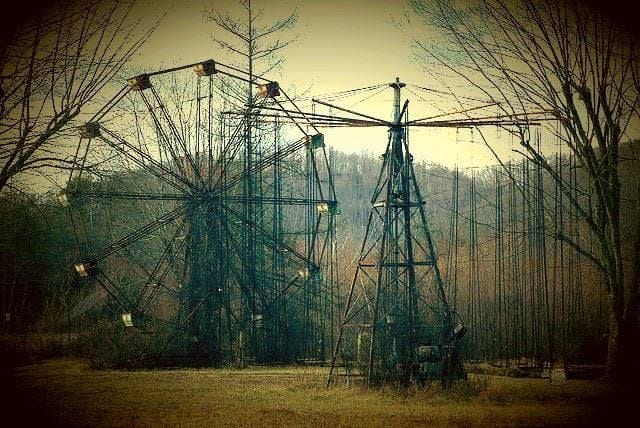
The rusted and overgrown rides of Lake Shawnee Amusement Park serve as a reminder of the failed West Virginia attraction, but its eerie past lives on in folklore for the area.
To start, the park was built over a Native American burial ground, with an archeological dig uncovering thirteen bodies, mostly children.[1]
But that’s not the darkest history of the land.
In 1783, Mitchell Clay was the first European settler to make a home in the area, which was heavily inhabited by the Shawnee Native American tribe.
While Clay was gone to town one day, the Shawnees surrounded three of the Clay children, who were working in the fields. Bartley was shot first. Tabitha, hearing the gunshot, ran to her brother, where she was attacked and cut by a knife, her body dismembered. Both of their scalps were taken by the Shawnee group. Their brother Ezekiel was captured and burnt at the stake.
A historical marker on the road leading to the park commemorates their memories.
One could wonder if the tragic history of the grounds is the reason for the six deaths that occurred at the park, eventually leading to it being closed down in 1966, and many locals, including the park’s new owner Gaylord White, claim the park to still be haunted.
9 Holy Land, USA
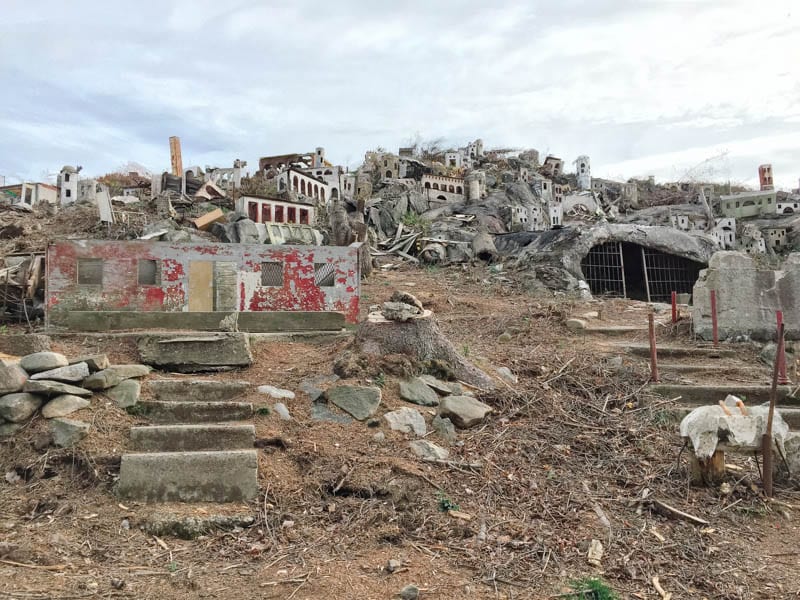
With a Hollywood-style sign and a cross marking its entrance, Holy Land in Waterbury, Connecticut is hard to miss as you drive along Interstate 84.
Originally opened in 1960, the theme park contained replicas of famous biblical scenes, including the Last Supper, Garden of Eden, and an inn featuring a “no vacancy” sign. The park saw more than 50,000 visitors each year while it was open until owner John Baptist Greco closed the park in 1984 in order to expand it. Before he could reopen the park, however, Greco died, and the park was bequeathed to a group of nuns who maintained the grounds but never reopened it.
People still found a way in, though, and vandalism and trespassing occurred, destroying many of the parks statues and attractions.
In 2010, Chloe Ottman and her friend Francisco Cruz decided to explore the park. The two had been friends for a couple years, and Chloe clearly thought they were just in for a night of creepy fun and underage drinking at the old park. Cruz, however, had different motives, and after Chloe refused to have sex with him, he raped and killed her, stabbing her in the neck, under the giant cross before throwing her body and belongings in the woods.[2]
Though he initially helped with the search to find Chloe, Cruz confessed to her death and led police to her body.
He was charged with capital felony, murder, and sexual assault and sentenced to fifty-five years in prison for his brutal act, leaving the park with a more sinister reputation.
8 Gulliver’s Kingdom
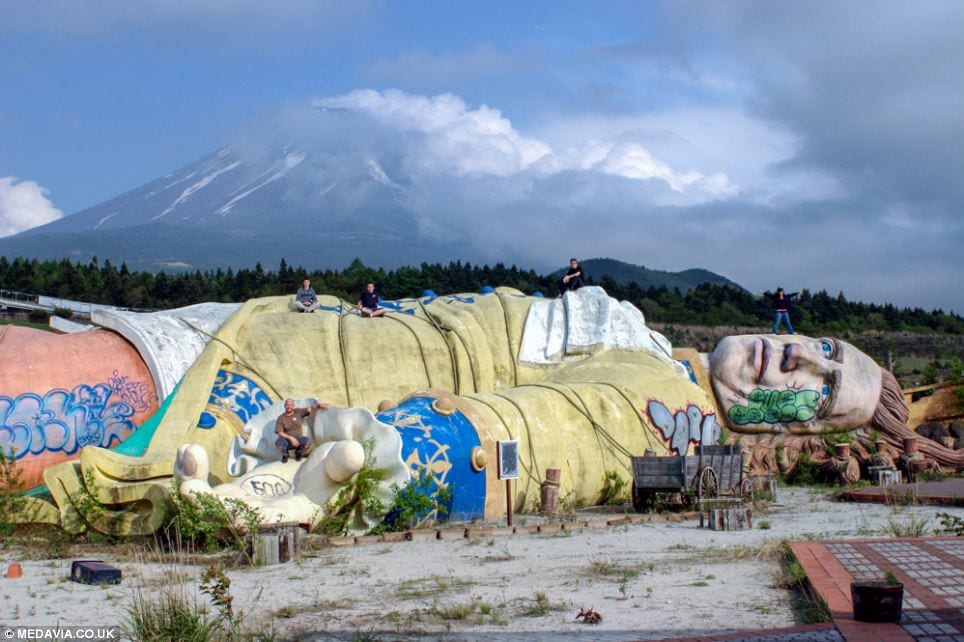
Japan is known for having some interesting ideas when it comes to parks and architecture, and one of their most interesting, and largest failures, was Gulliver’s Kingdom, located at the base of Mount Fuji.
The theme park, based on the Jonathan Swift book, cost $350 million to build and featured a forty-five meter long statue of Gulliver himself, with the main attraction being a bobsled ride, making it not exactly your typical amusement park.
The location of the park, however, makes it even stranger.
Right next to the park is Aokigahara Forest, better known as “suicide forest,” which is considered the second most popular suicide location after the Golden Gate Bridge in San Francisco.
The doomsday cult Aum Shinrikyo, the group behind the Sarin gas attacks[3] on the Tokyo subway, also had their headquarters and nerve gas production facility in the nearby village of Kamikuishiki. Residents and park goers claimed they could smell the chemicals when they were on the park grounds.
The park was thoroughly demolished in 2007, leaving nothing behind except for the strange memories and photographs and the questions as to why anyone thought it would be a popular attraction.
7 Rocky Point Amusement Park
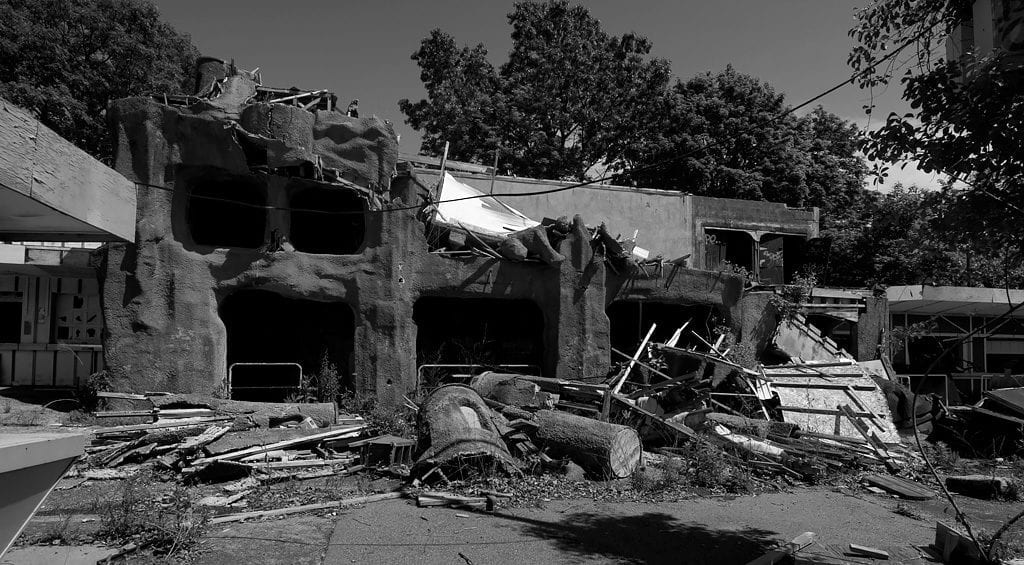
Rocky Point Amusement Park in Warwick, Rhode Island was one of the most popular attractions in the state, drawing crowds to its over twenty-five attractions and the famous Shore Dinner Hall and Palladium Ballroom. Most Rhode Islanders have a fond memory of visiting the park while it was open.
Through all the happiness and memories, there is a dark mark on the park’s past.
In August of 1893, Maggie Sheffield, a five-year-old girl, was killed by her father Frank while they attended the park. Frank had suffered a head injury shortly before Maggie was born, making him incredibly mentally unstable. Though it is not known exactly what made him flip on that late-summer day, after a meal at the Shore Dinner Hall, he took his daughter to the shoreline, where he smashed her head in with a rock, killing her.
Frank was found not guilty of his daughter’s murder due to reason of insanity.[4] Maggie’s death is the only murder in the park’s long history.
The thrills of the park left Maggie’s murder quickly forgotten, and Rocky Point carried on for over one hundred years.
Unfortunately, due to financial issues, the park was forced into foreclosure and closed in 1995, ending over 150 years of family fun in Rhode Island.
6 Joyland Amusement Park
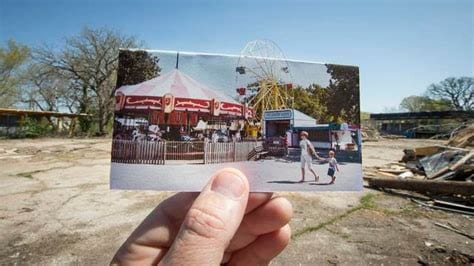
When it opened in 1942, Joyland was considered the biggest amusement park in the southwest, featuring a train, Ferris wheel, merry-go-round, Tilt-a-Whirl, and a roller coaster, it’s main and most infamous attraction.
The park would eventually grow to include a log flume ride, a haunted attraction ride, swings, bumper cars, and many other carnival-type attractions, as well as host concerts and outdoor festivals.
Though the park experienced a handful of ride-related deaths, the murder of a park employee would throw some shadows over the park in 1982. Michael King, an employee, would get into an altercation with four men, aged 17 to 21, after the men snuck into the park after hours. King was stabbed to death, and police arrested the men responsible, letting the two underage boys go, and brought charges up against Dwight Sayles and Victor C. Walker.
Sayles would plead guilty to voluntary manslaughter and given five to twenty years in prison, with the eligibility of parole in eight years.[5]
After the murder, the park would continue to operate and grow in size, adding another rollercoaster, but tragedy would continue to plague it. A park maintenance employee would be killed after getting hit by a rollercoaster and, in 2004, a thirteen-year-old girl would be injured after a thirty-foot fall from the Ferris wheel, which would lead to a series of financial issues and disputes that would eventually bring the park to close.
The 57-acres of Joyland were purchased in 2018 by Gregory and Tina Dunnegan, tent company owners who plan to bring new joy to the abandoned park by making it into an outdoor event venue for weddings, concerts, and traveling carnivals.
5 Kejonuma Leisure Land
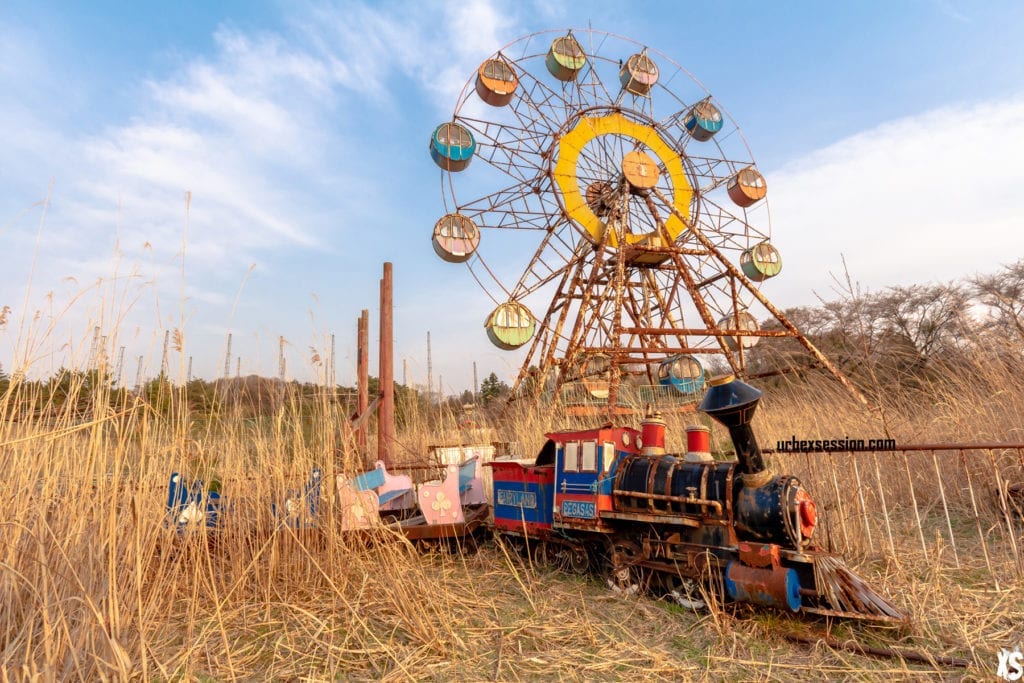
Kejonuma Leisure Land was once a thriving amusement park in Tohoku, Japan, boasting the typical park rides such as a train, Ferris wheel, and carousel, as well as a driving range, and a campsite. Today, however, nature has taken over the structures, leaving the park to look like a ghost town, and ghosts are what it is more infamously known for.
The legend of the park begins with a beautiful woman who lived near the lake that sits on the site of Kejonuma Leisure Land, which was well-known for housing an abundance of snakes. The woman became pregnant, and when she gave birth, the baby was a serpent who escaped into the water. Every night, the woman could hear her serpent-baby cry, driving her mad, and she eventually committed suicide by drowning herself in the lake. It is said her and the baby’s cries can be heard at night.
The translation for “Kejonuma” is literally “ghost woman,”
With how superstitious the Asian culture can be at times, it is no surprise the story of Kejonuma Leisure Land is mentioned in every article about the park, but it did not stop nearly 200,000 people visiting the site each year while it was open, leaving many to question the validity of the curse.
The park officially closed in 2000, citing a drop-off in visitors due to Japan’s declining birthrate and economic crisis, but the notoriety of the curse keeps the legend of the park alive, and those interested can buy the park,[6] as it is currently up for sale.
4 Dreamland Park
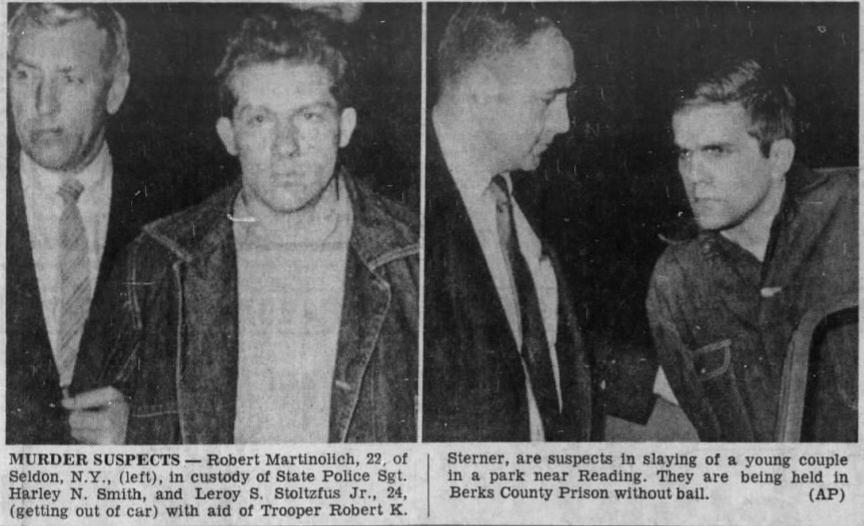
Dreamland Park began with a dark past that would continue to get darker. Built in the 1930s, the park would be open for less than two decades before it was shut down for rampant gambling and ties to the mafia.
Then, in 1969, Dreamland Park would make headlines again when two decomposing bodies would be found in the woods on the grounds of the park.
Due to the wooded and secluded area surrounding it, the park was a popular destination for couples to have a romantic drive and a little private time. On the night of August 12, 1969, Marilyn Sheckler, 18, and Glenn Eckert, 20, would set out for a drive to the park and never be seen alive again.
Their decomposing remains would be discovered feet from each other, in shallow graves, nearly two months later by state police. Autopsies would conclude that Marilyn had been raped repeatedly, and beaten, her head severely fractured, while Glenn had been shot in the forehead and side of the head and had also been beaten.
Investigators immediately suspected members of the Pagan motorcycle gang, as they had arrested ten members of the gang for beating and stabbing three men in the parking lot of Dreamland Park on the same night Marilyn and Glenn were last seen. Robert Martinolich, 22, and Leroy Stoltzfus, 24, would ultimately be arrested for the murders of the couple.
Martinolich and Stoltzfus would both be found guilty of first-degree murder and sentenced to life in prison without parole. Each wold maintain their innocence and appeal their cases until they each died while incarcerated.[7]
3 Magic Harbor
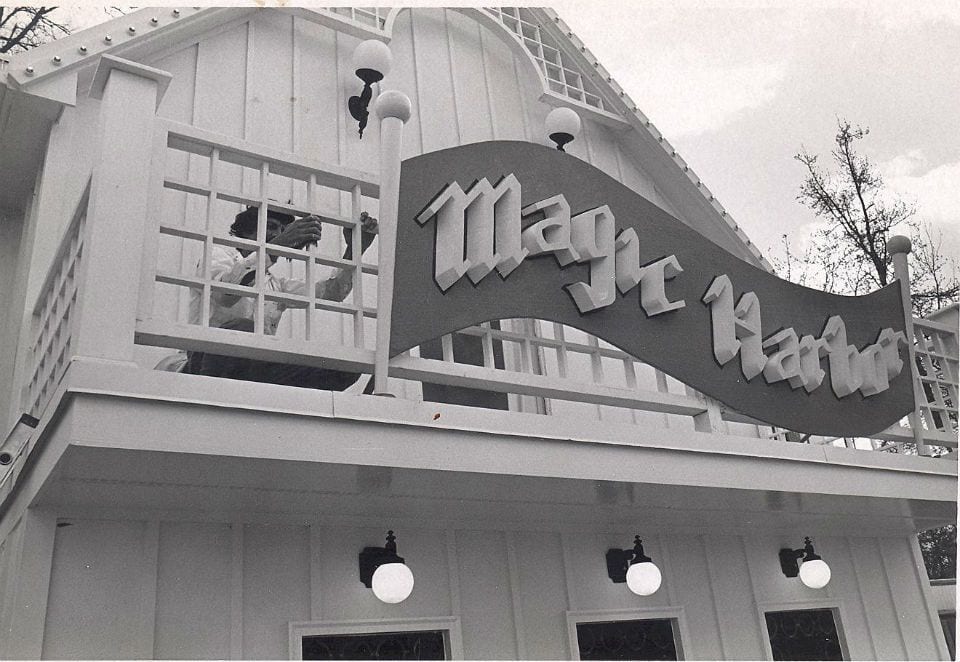
Just four miles south of Myrtle Beach, Magic Harbor Amusement Park had all the makings of a fun attraction — a roller coaster, bumper cars, Tilt-a-Whirl, arcade, hedge maze, Ferris wheel, and other all-ages rides, but it never really succeeded. Financial issues, changes in ownership, and deaths attributed to the park’s failure.
After the park closed on Labor Day, 1976, Franklin Loftis shot and killed the park’s owner Harry Koch and his sixteen-year-old stepson Carl Derk outside their trailer on the grounds of the park. Koch’s wife Carol survived the attack by hiding under the trailer. For years, the case went unsolved, making it the oldest cold case in Horry’s County history, until Loftis was charged. It was determined Loftis shot Koch over a wage and workman’s compensation dispute after Loftis, a carpenter for the park, was injured on the job.
Loftis was given two life sentences for the murders and was denied parole multiple times. Koch’s surviving wife had no desire to keep up Koch’s plan of expanding Magic Harbor, and the park went into foreclosure, was bought back by the bank, and then changed hands multiple times until it was sold to Geoffrey Thompson, president of the largest amusement park operation in Europe.
It seemed like the park’s luck was about to turn around with Thompson managing, but in 1984, tragedy would strike the park again.
Thirteen-year-old Sherri Lynn Depew was launched out of the park’s Black Witch rollercoaster. She died from her injuries, and her father sued Magic Harbor for $12 million, claiming negligence by the park for failing to supervise the ride properly.[8]. Thompson tried to claim the girl had failed to stay seated and follow safety guidelines for the ride, but the bad publicity alone was enough to hurt the park’s reputation once again.
In the mid-1990s, the park was closed and the land was bought by the neighboring campground, resulting in all of the buildings and rides to be completely demolished.
2 Brandywine Springs

Brandywine Springs Amusement Parks was a Wilmington, Delaware attraction from 1886 to 1923, and a solid example of early twentieth century fun.
There was a castle house, train, wooden rollercoaster, restaurants, pavilion, and a magnificent archway leading into the park.
In 1916, tragedy would strike the park when Catherine Bouidecki was shot and killed and Areti Nichols was shot by Samuel Gongas, who then set fire to the park’s restaurant, railway, and photography gallery, as well as some concession stands. Gongas was infatuated with Bouidecki, who was a waitress at the restaurant, and was apparently upset she turned down his advances, prompting him to snap and kill her.[9]
The park would close in 1923 when automobiles made it easier for people to travel and the park admission declined. Concrete slabs and muddy pools are all that remains of the amusement park today, but local historians are working on excavating and marking sites of where the major attractions stood, putting up signs and photographs to educate those who walk through the site.
1 Pripyat Amusement Park
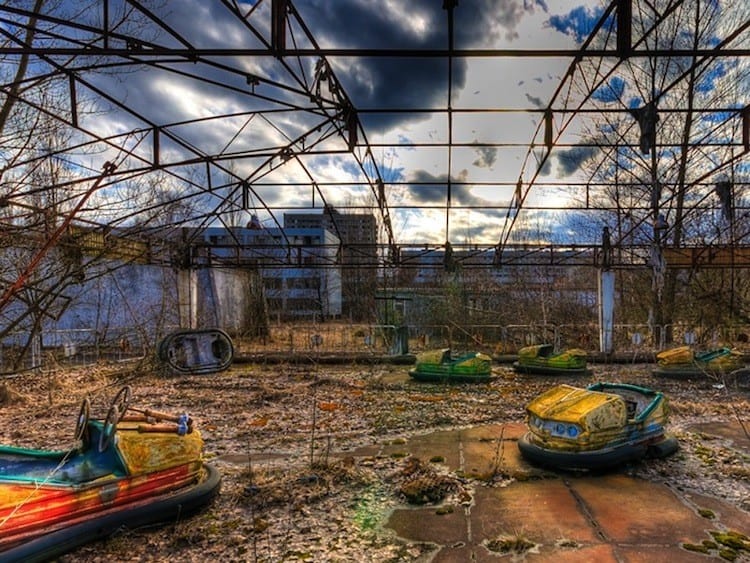
Maybe the most horrific history behind an amusement park is one that never came to be.
Pripyat Amusement Park in Pripyat, Ukraine was supposed to open on May 1, 1986, but five days before its scheduled opening, the Chernobyl disaster occurred nearby, resulting in thirty deaths in the months following the explosion.
The park consisted of attractions, bumper cars, swing boats, a swing-carousel, and a Ferris wheel. The Ferris wheel still stands today, unfinished and towering over the scene of destruction and the bumper cars are the strongest area of radiation in the park due to the overgrown vegetation.
It is believed the park was opened early for one day, April 27, to calm people from the disaster before they were forced to pack up their belongings and be bussed out of the city, never to return.
Today, the whole city of Pripyat, including the unfinished amusement park, is a destination for “dark tourism,”[10] guided tours through the Chernobyl ruins and abandoned towns.
For more lists inspiring dread check out 10 Terrifying Tales Of Death’s Stench, and Horrifying Facts About Flakka: The Zombie Drug.
Tracy spends her days writing and designing in a tourist town where she lives with her dog.

